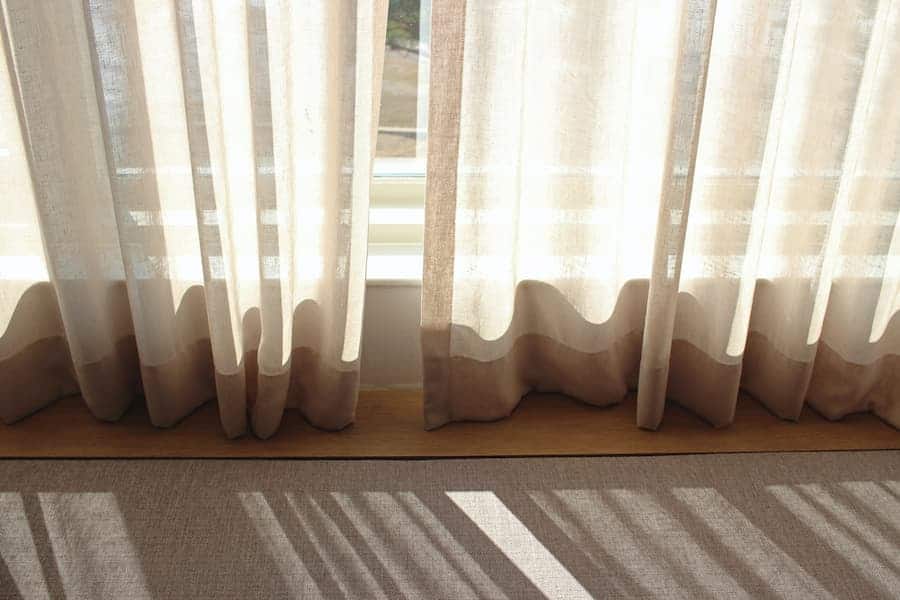Upgrading to high-quality curtains is an excellent way to change the look of the space and manage room lighting. But buying curtains in the right length can seem challenging, and many wonder, “do curtains lengthen after hanging?”
The answer is a lot more straightforward than you’d imagine.
Table Of Contents
Do Curtains Lengthen After Hanging?
Curtains and drapes lengthen over time after hanging because curtain fabric is made from woven threads. There is no glue holding the threads in place, and hence it’s normal for curtains to stretch. Generally speaking, curtains made from natural fibers lengthen more than those made from artificial fibers. However, the fabric’s weave also influences how much a curtain stretches.
Understanding the nature of fabrics will help you determine which fabrics lengthen and which do not lengthen as easily. Typically, loose-weave fabrics tend to lengthen more after hanging. If you hang up linen drapes on your windows, you can expect them to lengthen by roughly one inch every season.

Why Do Curtains Lengthen After Hanging?
There are two main reasons why curtains lengthen after hanging:
#1 Weight
Curtain weight is the biggest factor that causes lengthening over time, blackout curtains hanging on your curtains rods is the perfect example of this. The weight of the curtain in pounds has nothing to do with lengthening – it’s the weight of the face fabric. The face fabric hangs from itself, and the longer the curtain is, the more the threads stretch apart over time.
Drapes typically feature a side hem sewn through all layers of the curtain, and the vertical line formed helps prevent stretching. For this reason, the side hem of the curtains doesn’t stretch. However, the fabric between the side hems sags over time since the fabric in those parts does not have any vertical lines to support the curtain’s structure.
#2 Fiber
Curtains made from natural fibers such as cotton and silk and also semi-natural fabrics such as rayon lengthen over time. Linen curtains also stretch, but they also tend to shrink in dry weather.
Linen is a hollow fiber, and the fiber captures moisture in the hollow. In dry conditions, the stored moisture evaporates, and the fibers shrivel up. For this reason, linen curtains get wrinkled in dry climates.
When the climate changes and air moisture content increases, the fiber core absorbs moisture and straightens out the shriveled threads, lengthening the curtain in the process. The wrinkles also disappear in humid climates.
Solutions to Curtain Stretching
There are two ways around the curtain lengthening problem:
#1 Rehemming
Having non-linen drapes rehemmed is an excellent way to fix a lengthened curtain. You need to hire a professional who will then come over and mark the hanging drapes before taking them away for rehemming.
#2 Purchase Custom-Made Curtains
Getting in touch with a professional drape maker and asking them to sew you a curtain is another great way around the lengthening problem. The drape maker will factor in the lengthening of the fabric over time and adjust the length of the drapes accordingly.
For instance, if they expect your curtain to lengthen by an inch, they will construct a drape that’s an inch shorter than ordered.
Conclusion
Curtain fabrics are made from woven threads, and the weight of the curtain face stretches out the weaves when the curtain is hanging, lengthening it over time.
Different fabrics stretch differently, so if you’re concerned about curtain lengthening spoiling the look of your windows, it’s best to know the types of curtains and buy curtains constructed from artificial fibers or high-quality natural fabric that makes your curtains look luxurious.






